----------------
For a more detailed approach:
Atypical Liqueur Cellar from the Napoleon III period with braid, on its rectangular box with cut sides covered with an ebonized wood veneer, a delicate inlaid decoration of gilded brass, rosewood and mother-of-pearl with patterns inlaid with ribboned rush, flowers and pastilles, diamonds centered with quartefeuilles. Surrounded by sober listels in gilded brass, this illuminates the sides of the box, embellishes its facade, its upper plate jeweled with a large central medallion in polychrome porcelain with a subject allegorical.
Set around their perimeter with a gilded bronze rim decorated with small heart-raises and pearls, these exquisite tableautins in lively, luminous tones set the scene, set in an Arcadian landscape setting against which factories (Tempietto), stand out. neoclassical architectural elements (Doric column), two female figures majestically dressed in the Antique style. Surrounded by works of scientific significance (volume titled 'Par et Impar'), the first, studious, one elbow resting on voluminous folios, the left hand raised to her forehead, the right hand riveted to a calamus, seems absorbed, a treatise open before her, in her erudite task Sporting a tondo (secular attribute of painting, of sculpture) with the bust of a glorious historical or artistic celebrity of yesteryear, the second, with her throat bared, the round and dewy breast (Nature), hair haloed with a laurel wreath (one of the attributes of Poetry), seems to seek the heavens, stylus/brush raised high, creative inspiration These delicately painted allegorical female figures -. whose source could be found in Joseph-Marie Vien (1716-1809) or the proponents of the neo-Greek pictorial movement of the second half of the 19th century - illustrate La Science and Les Arts Formant while, they reveal the links uniting these two. areas of empirical knowledge and apprehension of Nature.
Equipped on its sides with fixed handles in gilded bronze chiselled with Rocaille-inspired ornamental motifs (shell-palmettes, leafy acanthus scrolls), our Liqueur Box, surrounded on its lid and its base with a string of pearls, rests on four flattened ball feet ringed with a pearl.
Opened, it reveals a variegated interior of mahogany burl. Equipped with a fixed compartmented display in the bottom of its box, with honeycomb shelves riveted to its side walls, it serves as a receptacle for the Liqueur Service. Made of Baccarat cut crystal, it is composed of four carafons of quadrangular section with rounded sides and faceted stoppers to which are matched sixteen small baluster-shaped stemmed glasses with flared rims. The clean lines of this crystal decoration are enhanced with listels, festoons and motifs of twisted stems or foliage of vine branches painted in fine gold.
Arts, Sciences and Liquors:
A fine example of these ingenious and luxurious "hand furniture" created by renowned Parisian cabinetmakers and tablet makers for the aristocracy or fashionable clients of the Second Empire, our Liqueur Cellar nevertheless stands out from its counterparts. In fact, at contrario of these declining at will, - according to the stamp of ostentation, wealth, decorum or even coquetry sought by the wealthy clientele of the time - forms, materials and ornamental repertoires of "Boulle" inspiration ( marquetry with inlay of tortoiseshell, marble, ivory), Louis XVI or Louis it is imbued with a discreet "neo-Greek" touch prized during the 1860s by a circle of aesthete enthusiasts praised for its various "hand furniture" (cigar box, liquor cabinet, jewelry set, etc.). ) considered "prodigies of elegance" (Louis Enault, 1867), Charles-Guillaume Dielh (1811-1885) was the main protagonist in the field of tablets and small luxury "artistic cabinetmaking".
The formal elegance, the ornamental sobriety as well as the luster of the materials supported by a refined chromatism of this Liqueur Cellar harmonize with its theme. Placed, not under the saucy auspices of Putti fluttering mischievously within clouds strewn with roses (attribute of Venus) but under the erudite tutelage of Science and the Arts mused with spiritual joys, it summons, according to the fine liqueurs contained in its bottles, a more ethereal or even distinctive imagination: one, uniting olfactory and gustatory voluptuousness, intellectual pleasures and aesthetic felicities.
---------------------------
Fine work of luxury Parisian tablets from the second half of the 19th century. Napoleon III period, circa 1860. Close to models created by Charles-Guillaume Dielh (1811-1885)
Materials: Ebonized wood veneer and Cuban Mahogany; mother-of-pearl, brass and gilded bronze; porcelain; glassware in cut, faceted Baccarat crystal and highlights painted with fine gold.
Dimensions: Liqueur Cellar: closed: H.: 29 cm; -L.: 40 cm;-Dr.: 30 cm- Open: H.: 46 cm;-L.: 66 cm - Porcelain medallion: Diam.: 9.3 cm x 9.5 cm. Glassware: Carafon: Total H.: 20.5 cm;-L; 8x8cm; -Stem glass: H. 7 cm.
Very good condition. Buffer varnish. With his key. Functional lock. Marked and numbered glassware. Note: only one glass of a slightly different model.





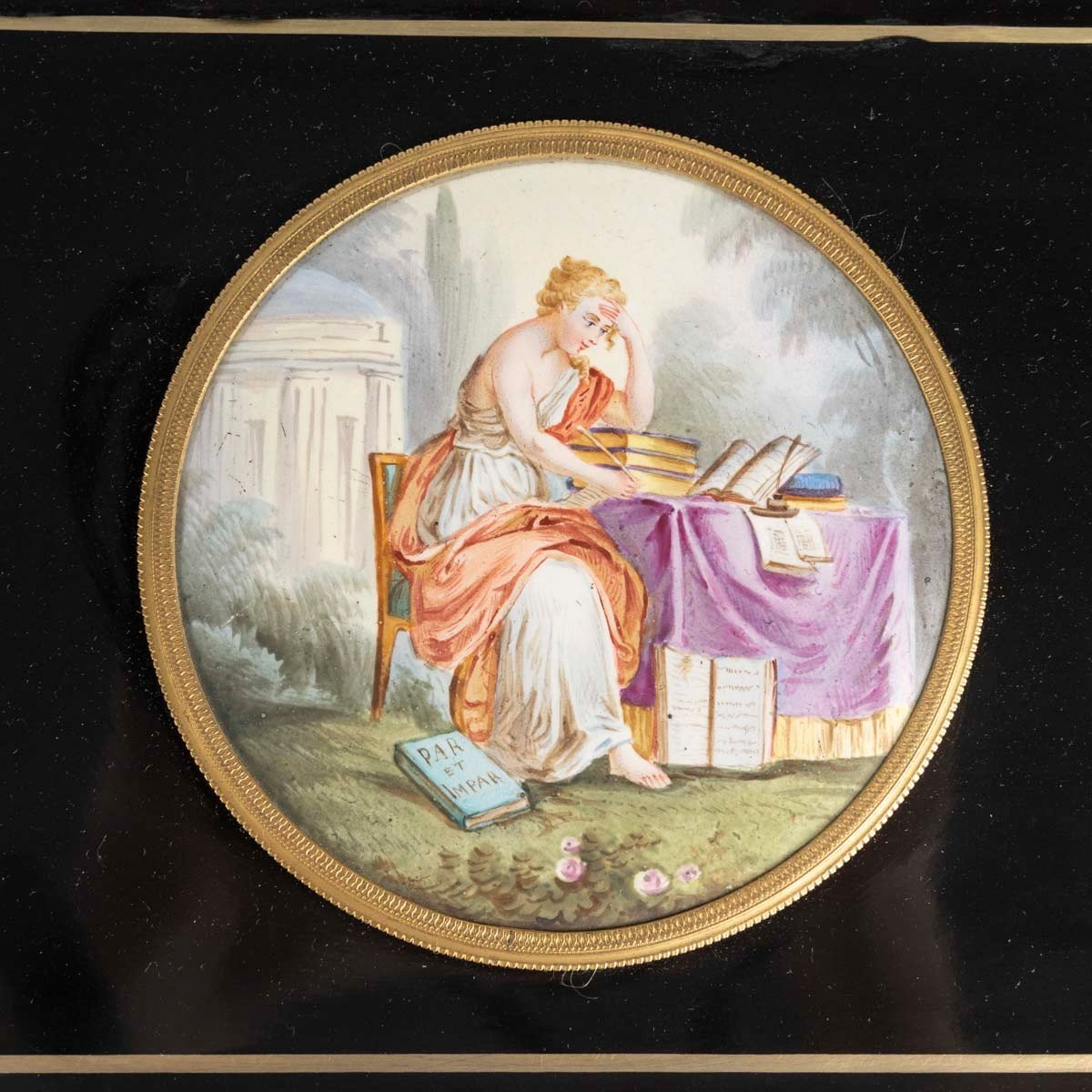

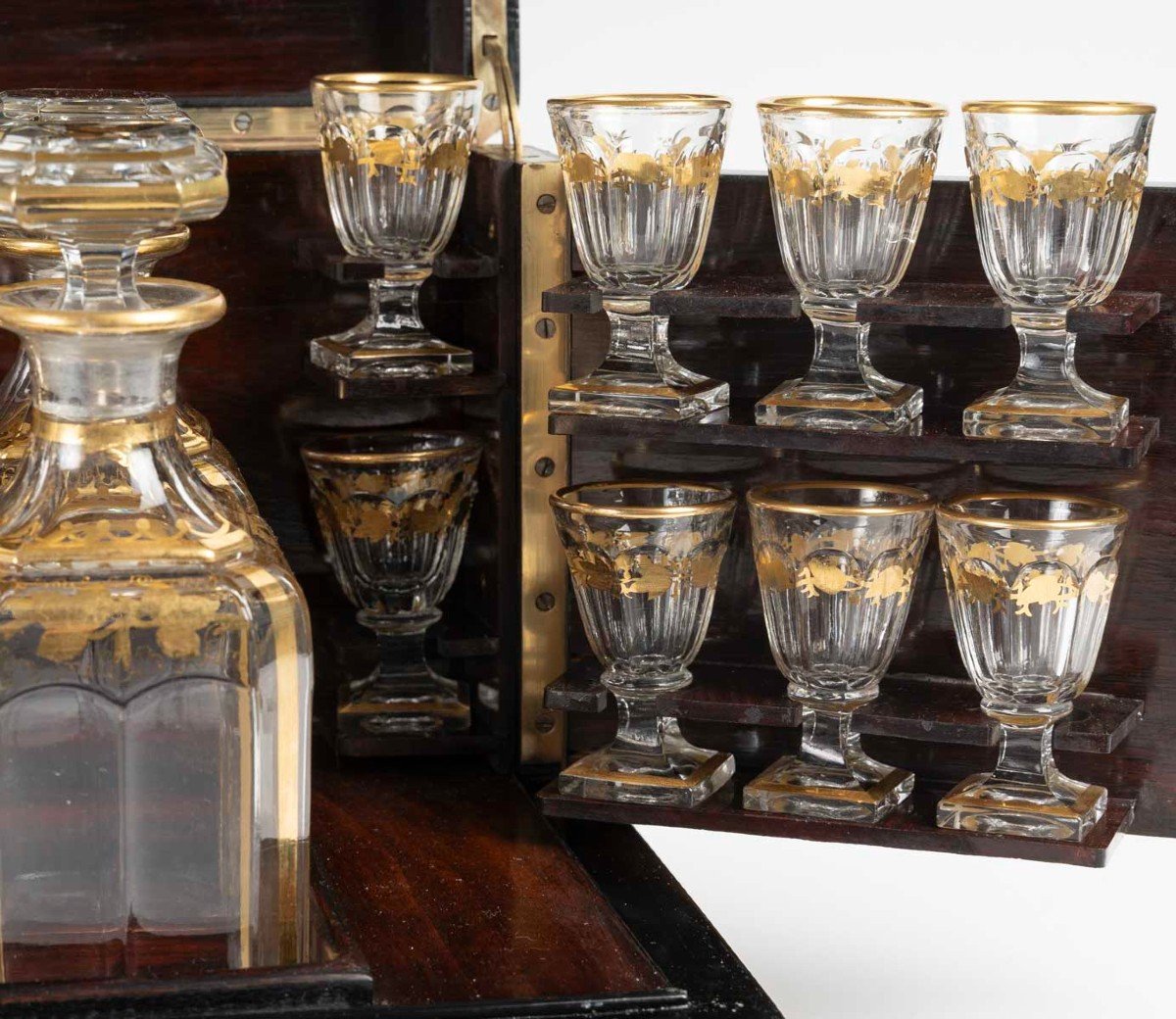






















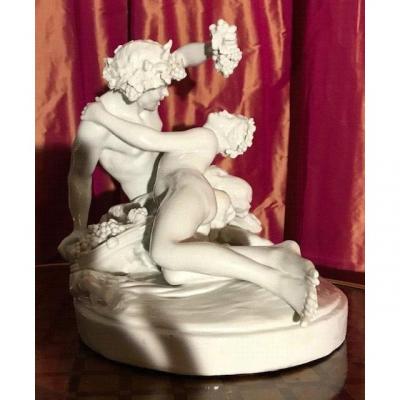




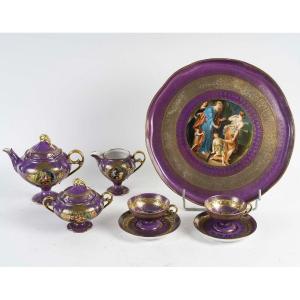
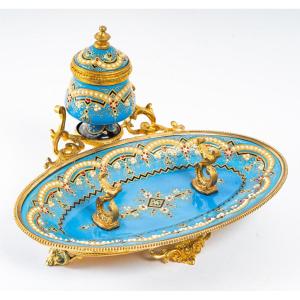






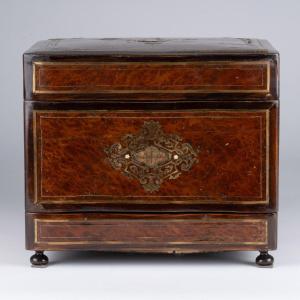






 Le Magazine de PROANTIC
Le Magazine de PROANTIC TRÉSORS Magazine
TRÉSORS Magazine Rivista Artiquariato
Rivista Artiquariato